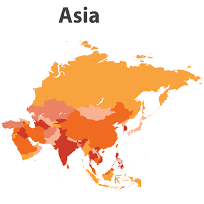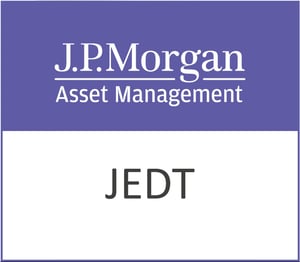Shire plc (LON:SHP, NASDAQ:SHPG), the leading global biotechnology company focused on rare diseases, has today announced that following priority review, the U.S. Food and Drug Administration has approved TAKHZYRO™ (lanadelumab-flyo) injection, for prophylaxis to prevent attacks of hereditary angioedema (HAE) in patients 12 years of age and older. HAE is a rare, genetic and potentially life-threatening disorder that can result in recurrent attacks of edema (swelling) in various parts of the body.1,2,3,4
“HAE attacks are painful, debilitating, and potentially life threatening. TAKHZYRO provides the HAE community with a new option for the prevention of HAE attacks,” said Anthony J. Castaldo, President, U.S. Hereditary Angioedema Association. “We are grateful for the time and effort put forth by the patients and researchers who participated in the clinical trial program that enabled this important addition to the HAE treatment landscape.”
TAKHZYRO is the only monoclonal antibody (mAb) that provides targeted inhibition of plasma kallikrein, an enzyme which is chronically uncontrolled in people with HAE, to help prevent attacks. The recommended starting dose of TAKHZYRO is 300 mg every two weeks. A dosing interval of 300 mg every four weeks is also effective and may be considered if the patient is well-controlled (e.g., attack free) for more than six months.
In the Phase III HELP (Hereditary Angioedema Long-term Prophylaxis) Study™ supporting FDA approval, TAKHZYRO reduced the number of monthly HAE attacks an average of 87% (n=27) vs. placebo (n=41) when administered at 300 mg every two weeks and 73% (n=29) vs placebo (n=41) when administered at 300 mg every four weeks (Adjusted P<0.001).5
In the 26-week clinical study, which included 125 people with HAE, patients taking TAKHZYRO 300 mg every 2 weeks also had 83% fewer moderate to severe attacks, and 87% fewer attacks that needed on-demand treatment. A pre-specified, exploratory analysis showed that 44% of patients (n=27) receiving TAKHZYRO 300 mg every two weeks had zero attacks compared to placebo (2%, n=41) for the 26-week treatment period from Day 0 to Day 182. Additionally, in a post hoc analysis of the 16-week period from Day 70 to Day 182, 77% of patients (n=26) treated with TAKHZYRO in the same dosage arm of the trial were attack-free compared to placebo (3%, n=37).
TAKHZYRO has a half-life of approximately two weeks and is administered as one subcutaneous self-injection every two weeks at the recommended starting dose. In clinical trials, the majority of patients took one minute or less to complete the injection.5 The most commonly observed adverse reactions (=10% and higher than placebo) associated with TAKHZYRO were injection site reactions consisting mainly of pain, erythema, and bruising at the injection site; upper respiratory infection; headache; rash; myalgia; dizziness; and diarrhea.
Andreas Busch, Ph.D., Executive Vice President, Head of Research and Development at Shire said: “With the approval of TAKHZYRO, HAE patients have an innovative treatment that works differently than current options to help prevent attacks. Based on an exploratory and post hoc analysis, after six doses of TAKHZYRO 300 mg every two weeks, 77% or nearly 8 of 10 patients had zero attacks. This approval reinforces our ongoing commitment to developing novel therapies that have a meaningful impact on patients. Looking to the future, we continue to work towards our goal of a world in which those living with HAE can aim for zero attacks.”
The FDA approval of TAKHZYRO was based on data from four clinical trials, including the HELP Study™, the largest prevention study conducted to date in HAE. Of the patients who completed the HELP Study™ who received TAKHZYRO, 97% opted in to an ongoing open-label extension study designed to evaluate the long-term safety and efficacy of TAKHZYRO.
Shire added TAKHZYRO to its HAE portfolio with the acquisition of Dyax Corp., which was completed in January 2016 in an all cash transaction valued at approximately $5.9 billion. Under the terms of the acquisition, the non-tradable contingent value right (CVR) received by Dyax shareholders will now pay $4.00 in cash per Dyax share as a result of the FDA approval of TAKHZYRO (formerly DX-2930).
About The HELP Study™
The HELP Study™ was a global, multicenter, randomized, double-blind placebo-controlled parallel group trial that evaluated the efficacy and safety of subcutaneously administered TAKHZYRO versus placebo over 26 weeks in 125 patients 12 years of age or older with HAE.6
The primary endpoint was the number of investigator-confirmed HAE attacks over the entire 26-week study duration. TAKHZYRO demonstrated that subcutaneous injections every two or four weeks reduced the mean monthly number of attacks across all three TAKHZYRO treatment arms studied: 300 mg every two weeks, 300 mg every four weeks, and 150 mg of TAKHZYRO every four weeks.6 At 300 mg every two weeks, TAKHZYRO reduced the number of mean monthly HAE attacks by 87% vs. placebo (Adjusted P<0.001).
Secondary endpoints included: 1) number of attacks requiring acute treatment and 2) number of attacks assessed as moderate or severe. Overall, each TAKHZYRO treatment arm demonstrated statistically significant attack rate reductions compared with placebo for all secondary efficacy endpoints (Adjusted P<0.001 for all comparisons), including: attacks requiring acute treatment (74% to 87%) and moderate or severe attacks (70% to 83%).
The most frequent adverse events occurring in =10% of patients taking TAKHZYRO were injection site reactions (52%), followed by upper respiratory infection (29%), and headache (21%). Hypersensitivity reactions have occurred in few patients (1%) and were non-serious. No anaphylaxis and no anaphylactoid reactions have been observed. In case of a severe hypersensitivity reaction, patients should discontinue TAKHZYRO and seek appropriate treatment.
The HELP Study™ Extension
The long-term safety and efficacy of TAKHZYRO for prophylaxis to prevent HAE attacks continues to be evaluated in an open-label extension study. The primary objective of the HELP extension study is to investigate the long-term safety of TAKHZYRO. At the time of interim analysis, the average length of time subjects have been exposed to TAKHZYRO is 8.2 months (SD=2.2). Interim safety data is consistent with controlled safety data from the HELP study.
In the extension study, 212 adolescent and adult patients received at least one dose of TAKHZYRO. Of these, 109 patients are rollover participants from the HELP Study™ and 103 are new or non-rollover participants who had a historical baseline attack rate of >1 attack per 12 weeks and a confirmed diagnosis of HAE. The median age of this study population is 43 years with a range of 12 to 76.
About TAKHZYRO™ (lanadelumab-flyo)injection
TAKHZYRO is a fully human monoclonal antibody that specifically binds and decreases plasma kallikrein and is indicated for prophylaxis to prevent HAE attacks in patients 12 years and older. TAKHZYRO is formulated for subcutaneous administration and has a half-life of approximately two weeks.7 TAKHZYRO is intended for self-administration or administration by a caregiver. The patient or caregiver should be trained by a healthcare professional.












































